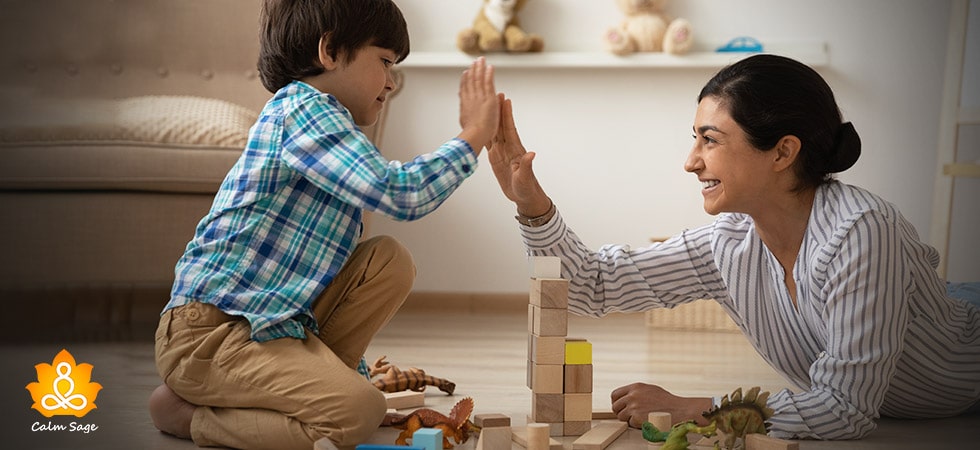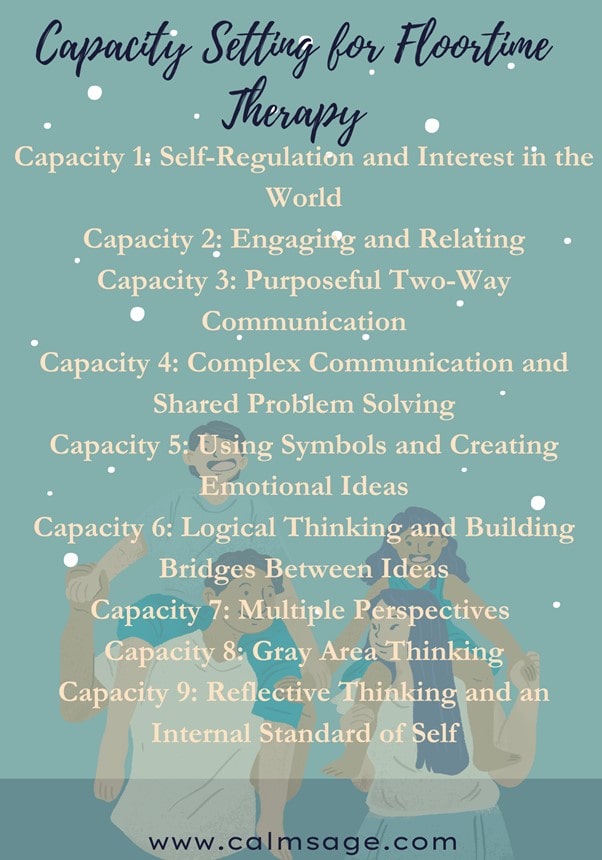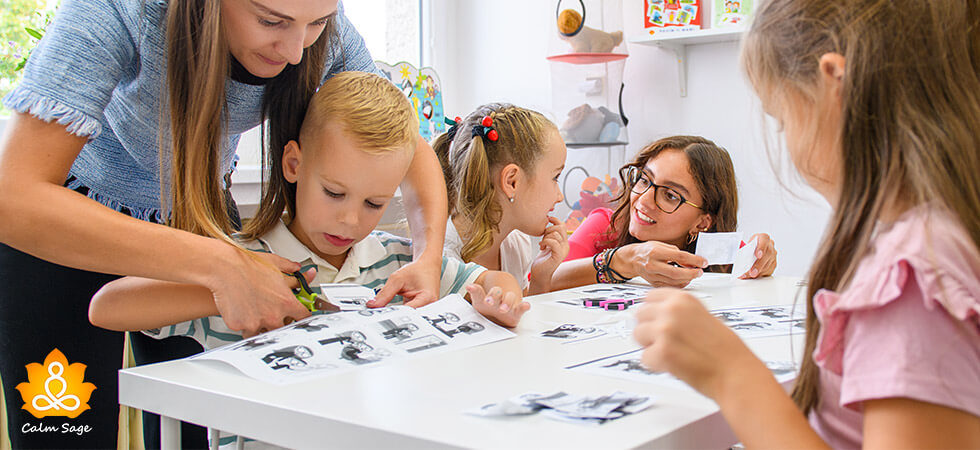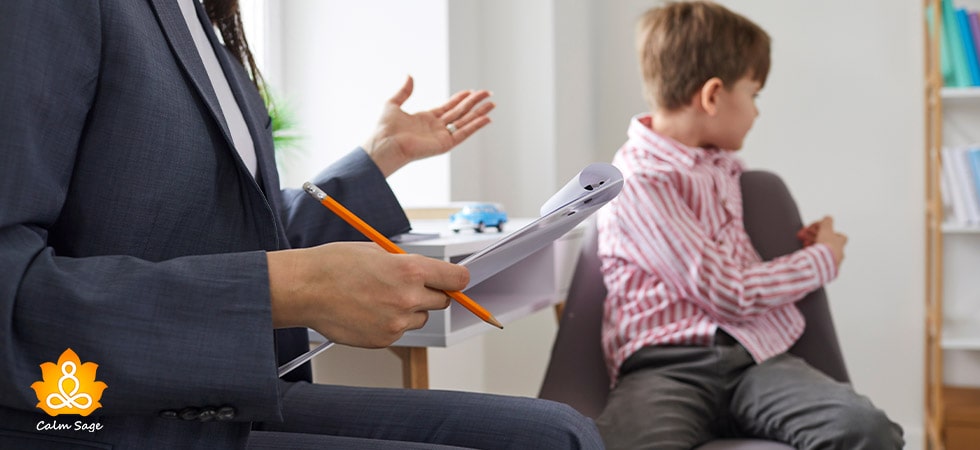All You Need To Know About Floortime Play Therapy For Autistic Children

Parents or caregivers of autistic children know how challenging stay connected emotionally with autistic children. Along with psychotherapy, it’s important to conduct different activities and therapy techniques at home. There are different therapies for autistic children that can be tried at home easily, floortime therapy is one of them!
Floortime play therapy is effective for children with autism as it involves different techniques that help in building emotional connection and communication skills in children.
Floortime therapy is an evidence-based behavioral therapy system that helps in making meaningful connections. It is a safe, connecting, low-risk, and low-cost therapy that focuses on improving social skills as well. In this blog, we will be taking a deep look at what is floortime play therapy for children.
So, let’s get started!
What is Floortime Play Therapy?
Floortime play therapy is a type of psychotherapy for autistic children that helps in building emotional connections and developing communication skills at home. Floortime play therapy can be easily tried at home and can be administered by parents, caregivers, guardians, para-professionals, or professionals.
Floortime play therapy was introduced in 1979 by Dr. Serena Weider and Dr. Stanley Greenspan. Floortime play therapy helps in building cognitive, behavioral, and social skills through structured interaction easily by a professional or by parents.
Floortime play therapy has evolved over time and it can also be referred to as the Developmental, Individual Difference, Relationship-Based model of intervention (DIR). With the help of DIR floortime play therapy, people can easily train themselves with robust and positive results.
Floortime play therapy is an evidence-based therapy that has evolved over the years and changed the complete outlook of autism. Consecutively, it’s a new form of behavioral therapy which can be easily tried at home.
Floortime is based on simple theories and it is somewhat compared with the most common and effective approach for treating autism which is Applied behavioral analysis (ABA).
Floortime play therapy is more based on building emotional connections meanwhile ABA is more focused on reward-driven behavioral modification.
Six Key Milestones of Floortime Play Therapy are:
- Complex communication
- Emotional thinking
- Emotional ideas
- Self-regulation
- Self-engagement in relationships
- Two-way communication
How Does Floortime Play Therapy Work?
Generally, floortime play therapy is practiced in a safe environment and sessions of floortime consist of 20-25 minutes. Floortime play therapy can be easily practiced by parents, caregivers, therapists, trained professionals, and even older siblings. Anyone at your home can go through the training process taught by floortime therapists or professionals.
Sessions can be practiced in a low-risk and safe place such as a living room, playground, office area, or any location that promotes open-ended playing. During a session, a parent or therapist usually observes a child engaging in an activity with the goal of promoting and developing communication skills.
The only focus of the practitioner is to develop communication based on actions or responses be it verbal or non-verbal. Additionally, it’s important to engage with the child on the basis of their interests, responses, and actions to solve the purpose.
For example, suppose a child is playing with flashcards and keeps on picking flash cards again and again, herein you can interact with the children and ask them what’s the meaning to get a response where they show interest. Additionally, you can pick up activities that can help improve parent-child relationships such as you can color things together.
The goals set in the sessions of floortime play therapy are referred to as “capacities”, you can set different capacities for different sessions to make sessions interactive, engaging, and goal-reaching. Generally, there were 6 capacities, but for proper development and skills, 3 more capacities were introduced that can be used for older children and adults as well.

Research and Evidence Supporting Floortime Play Therapy
Psychological evidence shows that behavioral therapies consist of a few specific goals but floortime therapy is quite different from other behavioral therapy systems. The goals are not easy to measure but they sound very practical for developmental changes. It is kind of difficult to measure the goals or capacities of floortime therapy because every child is different and it’s quite challenging to measure every child on the same graph.
The progress or healing can be unique for everyone. Most studies show that DIR floortime therapy is quite effective for autistic children as it keeps them engaged in activities and helps in building social and communication skills which can be great for enhancing creativity, playfulness, or joyfulness in autistic children.
Pros and Cons of Floortime Play Therapy
Floortime play therapy can be really great for quality family time and it can be really evolving as it consists of various emotional and psychological benefits. Here are some pros and cons of floortime play therapy:
| Pros of Floortime Play Therapy | Cons of Floortime Play Therapy |
|---|---|
|
|
|
|
|
|
|
|
|
|
How to Practice Floortime Therapy at Home
If you’re a parent or caregiver of an autistic child and want to proceed with floortime play therapy at home, you can begin the process by enrolling yourself in the certification course related to floortime play therapy. You can visit the Interdisciplinary Council on Developmental and Learning Disorders (ICDL) for more information related to DIR/floortime play therapy.
Moreover, you can also read books or watch videos related to DIR floortime training. Below is a mini-guideline to implement floortime play therapy at home:
Step 1: Find a comfortable place or corner at your home wherein you can easily implement DIR floortime therapy.
Step 2: Place a video recorder or camera to record your sessions. Recording your sessions enables you to track progress.
Step 3: Add in some toys, books, objects, or activities.
Step 4: Set a timer for 20 minutes.
Step 5: Set your capacities for the sessions and start observing your child.
Step 6: Join your child according to the capacity.
Step 7: Be patient throughout the process and keep your focus intact on the goal.
Step 8: Enjoy the play time and focus on building a relationship with your child.
Basic Principles of Floortime Play Therapy
- Answer to child’s emotional responses
- Observe changes closely
- Be a good listener
- Respond to emotional cues
- Be patient with children
- Follow the child
- Keep the interaction alive
- Encourage communication
- Create a playful and safe environment
- Be aware of your body language
- Encourage thinking and playing
- Support independence
DIY Floortime Play Therapy Ideas
- Building blocks (Legos, plastic or wooden blocks)
- Paint, decorate, and build different boxes
- Play-Doh
- Musical chairs
- Balloon activity
- Hide and seek
- Singing
- Puppets
- Train building
- Racing cars
- Pretend playing
- Cooking
- Reading books
- Trampoline
- Beanbag squishes
- Marble maze bowling
- Blanket fort
- Sensory play
How to find a Floortime Play Therapist?
If you want to get the help of a professional, you can easily do that by finding a full-time play therapist nearby. You can take the reference of the ICDL online directory or search on Google directly.
Take the reference of the below-listed guide for finding the right and supportive Floortime play therapist for your child:
- Learn about goals or capacity setting
- Read about their structured programming
- Discuss the particular needs of your child
- Review videos or take personal reviews to find the right therapist
- Ask about their model techniques
Conclusion
Floortime play therapy is an effective and evidence-based therapy that is specially developed for autistic children to make meaningful connections and learn different communication skills. If you’re a parent of an autistic child, you can try this therapy at home.
Before getting started, please consider the pros and cons and always be patient with children. Try addressing the core needs of your children first and then move on to developmental needs. Overall, this therapy system can be really effective for your child.
I hope this blog helps you understand floortime play therapy for autistic children. Comment down and share your views on the same or you can also write to us at Calm Sage.
Thanks for reading!




















